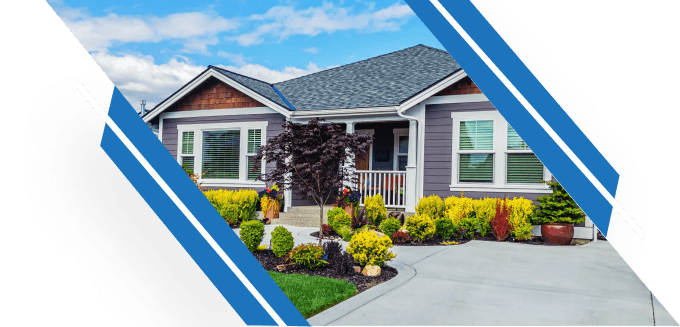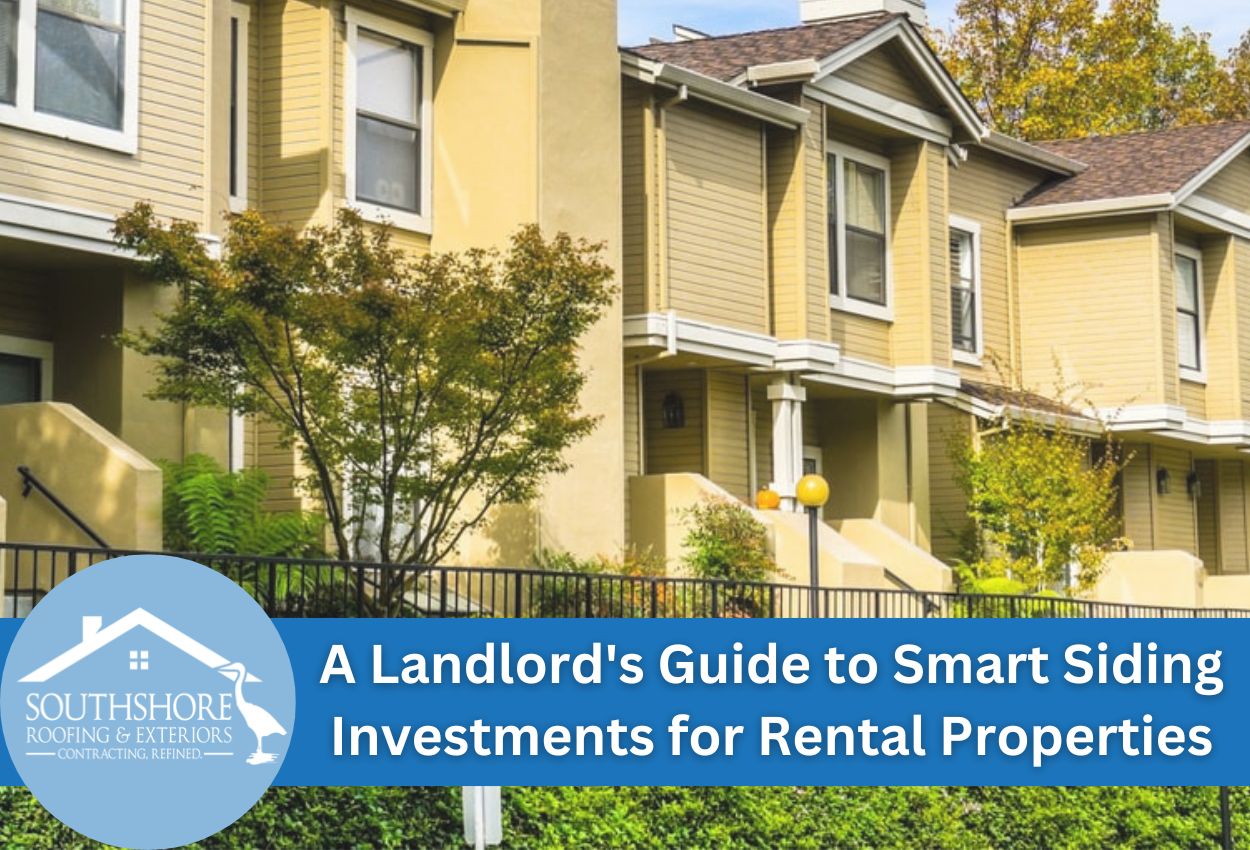Selecting the right siding for rental properties presents unique challenges that differ significantly from decisions that a residential homeowner would make. For Tampa landlords and property investors, siding choices directly impact property value, maintenance expenses, and tenant satisfaction in ways that affect both short-term cash flow and long-term returns. Unlike homeowners, who might prioritize aesthetic preferences above all else, landlords must balance durability, cost-effectiveness, and weather resistance to maximize their investment.
Rental properties face increased wear and tear from tenant turnover, making low-maintenance siding options particularly valuable for property managers. In Tampa’s humid subtropical climate, where properties endure intense sun exposure, heavy rains, and the occasional threat of hurricanes, weather-resistant siding becomes essential for protecting rental properties from potentially costly damage. The right siding material can significantly reduce ongoing maintenance costs while maintaining curb appeal that attracts quality tenants.
Cost-effective siding materials for investment properties don’t necessarily mean choosing the cheapest option. Smart landlords consider lifetime value, factoring in installation costs, expected lifespan, maintenance requirements, and potential energy-efficient benefits. Properties with durable, attractive siding command higher rents and experience less vacancy, creating substantial long-term advantages for strategic rental property owners.
Durability Factors: Top Siding Materials That Withstand Tenant Turnover
When managing rental properties, siding materials face unique challenges, including frequent tenant transitions, reduced maintenance, and potential damage during move-ins and move-outs. The best siding options for Tampa rental properties combine resilience with reasonable costs to protect your investment for years to come.
Fiber-cement siding stands out as a premier choice for Tampa landlords. This composite material resists impact damage, moisture intrusion, and insect activity while maintaining its appearance through multiple tenant cycles. Our Tampa clients report that fiber-cement installations last 50+ years with minimal upkeep, even on properties with high turnover rates.
Vinyl siding is another excellent option for property managers on a budget. Modern vinyl products resist fading from Tampa’s intense sunlight and withstand the occasional bumps from furniture during the moving process. With the right installation, vinyl siding requires virtually no maintenance beyond occasional cleaning and tends to provide a ROI within 5 to 7 years through reduced repair costs.
Engineered wood siding provides a balance of aesthetic appeal and durability that helps maintain property values. These products include special treatments to resist moisture, fungal growth, and termites, which are all common concerns in Tampa’s climate. Property managers appreciate how engineered wood maintains its appearance through tenant changes while being easier to repair if damage occurs.
The Importance of Weather-Resistant Options for Tampa Rental Properties
Tampa’s unique climate poses specific challenges for rental property siding that require careful material selection. The combination of high humidity, exposure to salt content in the air, and the annual threat of hurricanes creates a particularly demanding environment for exterior building materials.
Fiber cement and vinyl siding both offer excellent hurricane resistance when properly installed, and they tend to have impact ratings that are suitable for Tampa’s high-wind zones. For properties closer to Tampa Bay or the Gulf, look for siding with enhanced resistance to corrosion caused by salt in the air, preventing it from deteriorating. Many manufacturers now offer specialized coastal warranties specifically designed for Florida’s challenging conditions.
UV protection is another critical factor in Tampa, where intense sun exposure can cause premature fading and material breakdown. Premium vinyl siding with fade-resistant technology maintains its appearance for decades despite relentless sunlight. For maximum weather protection, ensure your siding installation includes proper moisture barriers and ventilation systems that prevent humidity from becoming trapped behind panels, which is a common issue that leads to mold growth.
Minimizing Maintenance: Siding Solutions for Hands-Off Property Management
As a landlord, you can’t expect your renters to clean the siding as frequently as needed, so to minimize maintenance responsibilities you’ll want to select the right siding solution to reduce ongoing property management demands. Low-maintenance siding options allow property owners to focus on other aspects of their business while maintaining attractive, durable exteriors that appeal to prospective tenants.
Vinyl siding tops the list for maintenance-free options, requiring only occasional cleaning with a garden hose and mild detergent. Unlike wood siding that demands regular painting every 3 to 5 years, vinyl can maintain its appearance for decades without repainting. Fiber cement follows closely behind, typically needing repainting only every 10 to 15 years while resisting rot, pests, and moisture issues common in Tampa’s humid environment.
Proper installation significantly extends siding longevity and reduces maintenance needs. This includes installing adequate house wrap beneath siding panels, ensuring that the seams are properly overlapped, and using quality flashing around windows and doors. Professional installation from experienced Tampa contractors makes a substantial difference in performance, as improper installation accounts for nearly 80% of premature siding failure on rental properties.
ROI Analysis: Siding Cost vs. Longevity for Investment Properties
Understanding the return on investment for different siding materials is crucial for Tampa property investors looking to maximize the profitability of their rental property. Initial installation costs tell only part of the story, but the true value emerges when analyzing lifespan, maintenance requirements, and replacement intervals together.
Vinyl siding offers the lowest upfront investment at $5 to $8 per square foot installed, with a typical lifespan of around 20 to 40 years in Tampa’s climate. While cheaper initially, it may require replacement 1 to 2 times during the time that you own the property.
Fiber cement is around $9 to $12 per square foot but delivers 30 to 50 years of service with minimal upkeep, often outlasting the investment. Engineered wood falls between these options at $7 to $10 per square foot with 20 to 35 years of performance when properly maintained.
Metal siding presents an interesting case for landlords, while costing around $8 to $14 per square foot installed, its 30 to 70 year lifespan virtually eliminates replacement costs, making it surprisingly economical long-term despite a higher initial investment.
Traditional wood siding, while aesthetically pleasing, demands significant ongoing maintenance costs that typically outweigh any initial savings when calculated across multiple decades.
Balancing Curb Appeal and Practical Performance
While durability and maintenance requirements remain primary concerns for the siding on rental properties, appearances play a crucial role in attracting quality tenants and maximizing rental income. Tampa landlords must strike a delicate balance between visual appeal and practical performance to optimize their ROIs.
When selecting siding colors and styles for rental properties, neutral tones typically offer the broadest tenant appeal while providing better fade resistance in Tampa’s intense sunshine. Light-colored siding options like soft beige, gentle gray, or muted blue-gray complement Florida’s architectural landscape while reflecting heat and maintaining their appearance longer than darker alternatives.
Creating a distinctive property that stands out in competitive rental listings doesn’t require bold or polarizing design choices. Instead, focus on architectural consistency and thoughtful accent elements. For example, installing complementary trim colors, decorative shutters, or a stylish entry door system creates visual interest without limiting tenant appeal. These subtle touches photograph well for listings while remaining universally attractive to diverse tenant preferences in Tampa’s competitive rental market.
For higher-end rental properties, texture can provide visual distinction without sacrificing broad market appeal. Mixing siding styles, such as horizontal lap siding with decorative shake accents creates architectural interest that elevates your property’s perceived value while using durable, low-maintenance materials suited for Tampa’s demanding climate conditions.
Implementation Strategy: Timing, Contractors, and Tenant Coordination
Successfully executing a siding replacement project on your Tampa rental property requires strategic planning around tenant occupancy, contractor selection, and project coordination. Planning these elements carefully can minimize disruption while maximizing the value of your investment.
The ideal time to replace siding is when there is a transition between tenants and properties that are vacant. This eliminates tenant inconvenience and potential liability issues while giving contractors unrestricted access to complete the work efficiently. For occupied properties, scheduling during Tampa’s dry season (typically November through April) reduces weather delays and moisture-related installation complications. Allow 2 to 3 weeks for standard single-family rental property siding projects, with additional buffer time for unexpected issues.
When selecting contractors, prioritize companies with rental property experience who understand investor priorities. Request references from other Tampa landlords, verify proper insurance coverage, and confirm familiarity with local building codes affecting rental properties. The contractor should provide clear communication protocols, tenant interaction guidelines, and realistic timelines that accommodate your property management requirements.
For occupied properties, provide tenants with at least 30 days written notice of upcoming siding work, explaining the benefits they’ll receive (improved insulation, reduced noise, enhanced appearance). Consider offering modest rent reductions during construction periods to maintain goodwill. After completion, leverage your property’s new appearance in marketing materials and consider modest rent increases for new tenants to recoup your investment while highlighting the property’s improved quality and energy efficiency.
Expert Siding Solutions for Tampa Rental Property Owners
Don’t let your rental property’s exterior deteriorate while you focus on other management tasks. At SouthShore Roofing & Exteriors, we understand the unique challenges Tampa landlords face with siding decisions that impact tenant satisfaction, property value, and maintenance costs.
Our team specializes in durable, weather-resistant siding installations designed specifically for rental properties. We’ll help you select materials that withstand Florida’s harsh climate, frequent tenant turnover, and minimize your long-term maintenance requirements.
Ready to maximize your rental property’s ROI with siding that truly performs? Contact SouthShore Roofing & Exteriors today at (813) 400-3329 to schedule your free consultation. We’ll help you balance appearance with practicality while protecting your investment for years to come.




